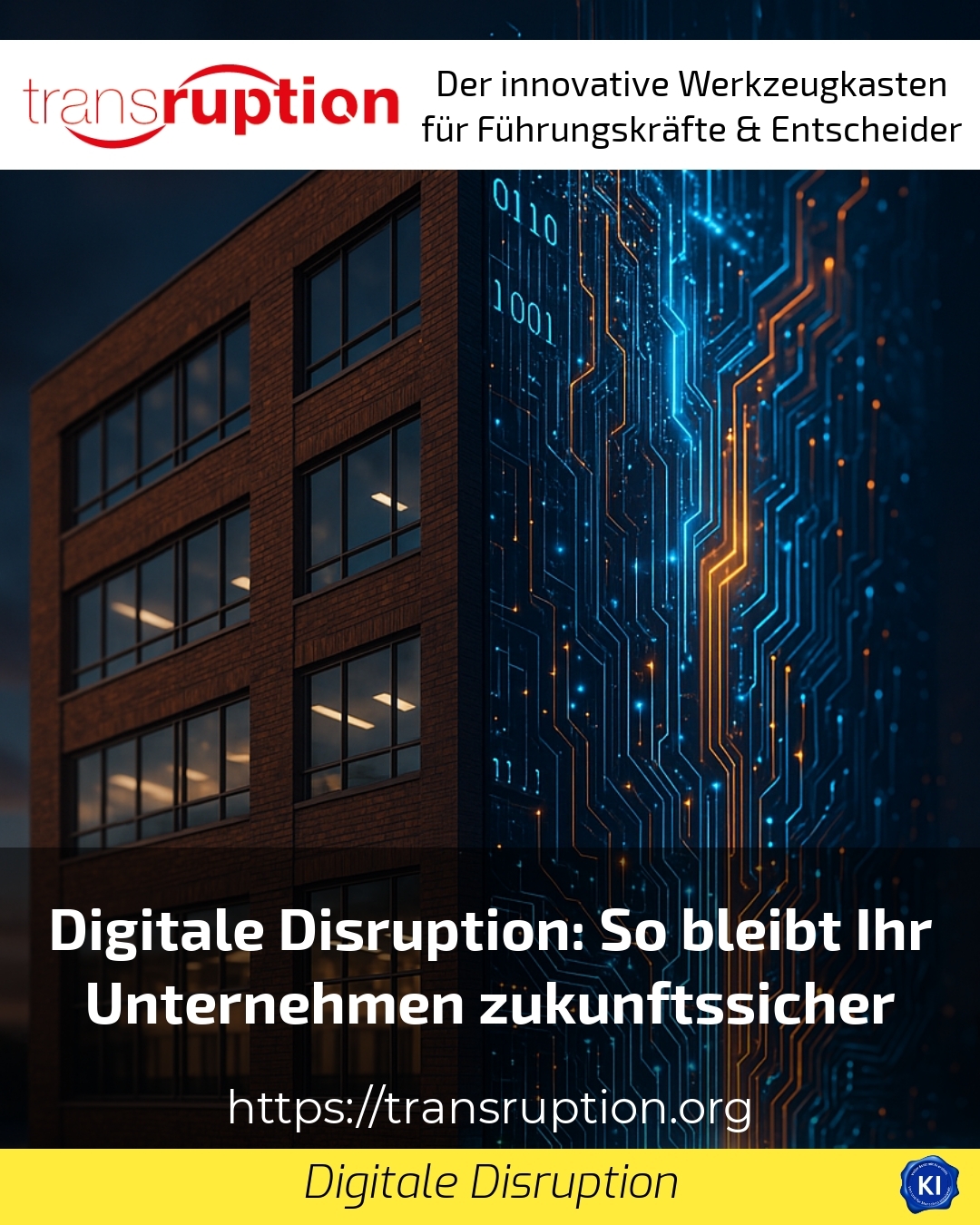Digital disruption as a companion in the transformation of the corporate world
More and more companies are seeking support when it comes to securing their competitiveness in times of dynamic change through digital disruption. Clients often report that they face complex challenges as soon as new digital technologies put traditional business models to the test. They want support in order to receive impulses that help them reflect on their own business model and adapt it for the future.
Especially in sectors such as retail, industry or the specialised service sector, we are encountering disruptive developments that offer new opportunities as well as risks. One example of this is the logistics sector, where digital innovations through smart systems and automated processes require new approaches to organisation and management. A structured support process helps companies to be more open to change and develop the right innovation approaches.
Industries that are particularly affected by this dynamic often report that the pressure for digital disruption has increased in recent years - not least due to changing customer expectations that demand more convenient, faster and personalised use of products and services. This gives rise to project approaches in which changes to corporate culture and processes play a central role alongside technical implementation.
Impulses for shaping digital disruption in companies
It is important to understand digital disruption as a sustainable process that is not defined solely by technologies, but above all by the way in which companies rethink their offerings, structures and strategies. Established companies from sectors such as mechanical engineering, financial services and energy supply are increasingly relying on support in order to develop flexible and self-organised paths for digital reorientation.
A further impetus comes from opening up innovation processes: The collaborative development of solutions with partners outside of your own organisation creates access to fresh ideas and new skills. In this way, the transformation process is supported more strongly and risks can be better distributed. This approach can be found in the automotive industry or in the healthcare sector, where complex projects often involve several stakeholders.
BEST PRACTICE at company XYZ (name changed due to NDA contract) The company began by strategically analysing disruptive megatrends in its industry. It established an agile innovation lab in which multidisciplinary teams continuously conducted experiments with new digital tools and business models. Managers and employees were equally involved, which promoted a cultural shift towards greater openness and flexibility. The company reports that this integrative process is helping it to prepare for future challenges.
Industry-specific challenges and opportunities due to digital disruption
The financial sector, for example, is faced with the task of not only expanding traditional services with the help of digital technologies such as blockchain or artificial intelligence, but also rethinking them. Consciously accompanying this complex change promotes innovations that address new customer needs while also taking regulatory requirements into account.
In retail, digital disruption is leading to new customer experiences through omnichannel strategies or personalised offers. Companies often report that they need space to optimise organisational processes beyond the pure use of technology and to take employees on the journey with them.
And in the media industry, examples show how digital disruption is transforming established publishing models. Media companies are increasingly initiating projects that make intensive use of digital channels, try out new narrative forms and digitalise their editorial processes. In cases like these, consultants often recommend paying attention to the balance between established business and necessary innovation.
Best practice examples from various industries
BEST PRACTICE at company XYZ (name changed due to NDA contract) A digital platform was introduced in an industrial company that enables several departments to organise work processes transparently and identify new efficiency potential through data analytics. The implementation support focussed on consistently training employees and establishing a culture of continuous improvement.
BEST PRACTICE at company XYZ (name changed due to NDA contract) A provider from the service sector developed a new app that provides customers with digital services around the clock. The support focussed on various project phases, from requirements analysis to rollout, to ensure that acceptance was high among all stakeholders and that the digital solution offered real added value.
BEST PRACTICE at company XYZ (name changed due to NDA contract) In the area of energy supply, support was provided for the integration of sensor technology and intelligent control systems. The aim was not only to understand digital disruption as a technical challenge, but also to actively shape it in the context of sustainability and customer centricity. This enabled the company to tap into new business areas.
My analysis
Digital disruption is a challenge for many companies, but at the same time it offers them the opportunity to shape their own path to future-proofing. It is important that companies do not look at this process alone, but seek support that accompanies them along the way, provides relevant impetus and helps to establish an open attitude towards innovation. Technical solutions, organisational changes and cultural adjustments must go hand in hand.
The examples from different industries show that there are no one-size-fits-all solutions, but that customised solutions are required. If companies manage to integrate digital impulses into their projects in a targeted manner and at the same time promote a learning culture, they increase their chances of not only withstanding disruptive developments, but also actively shaping them.
Further links from the text above:
[1] Digital disruption - IT-P GmbH
[2] 7 successful examples of disruptive innovations of all time
[4] Digital disruption - OMR Glossary
[5] Disruptive technologies: Guide for companies - Lexware
[6] What is digital disruption? - DigitalisationCoach
For more information and if you have any questions, please contact Contact us or read more blog posts on the topic TRANSRUPTION here.
















